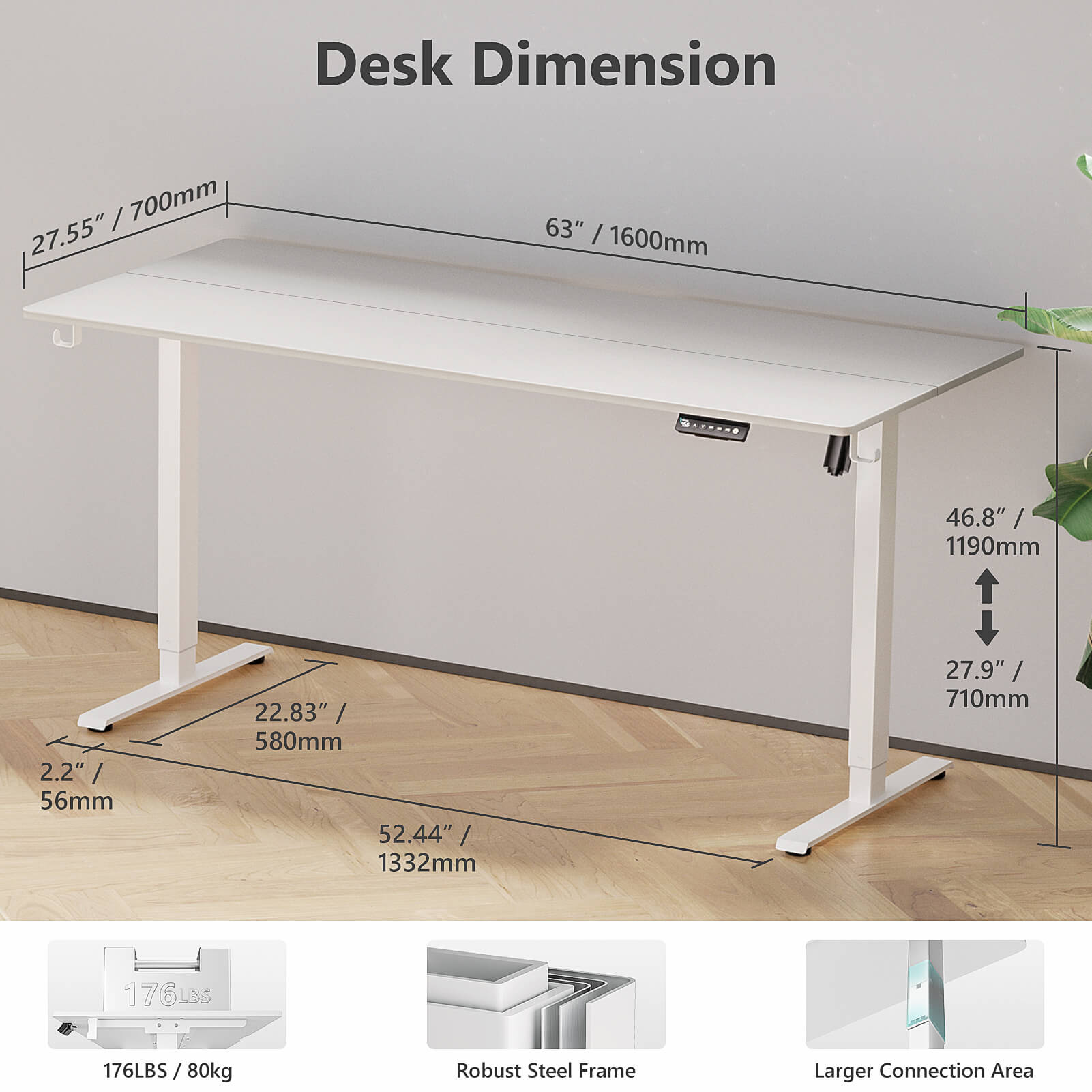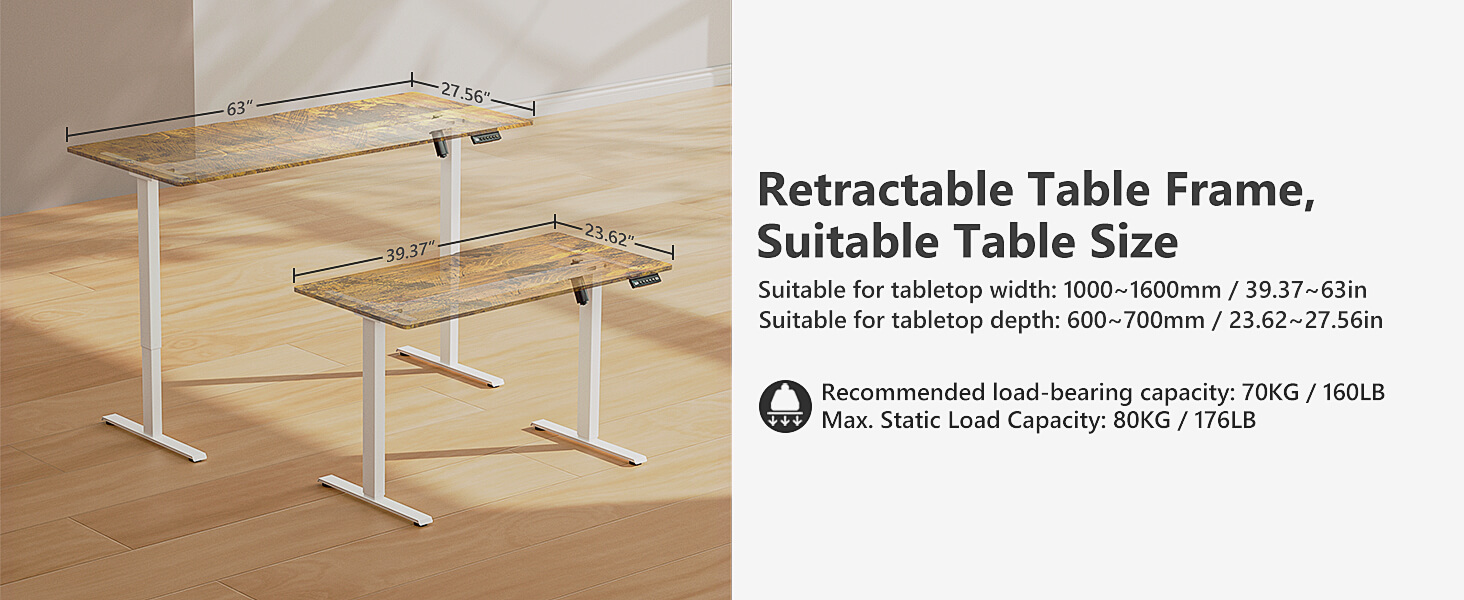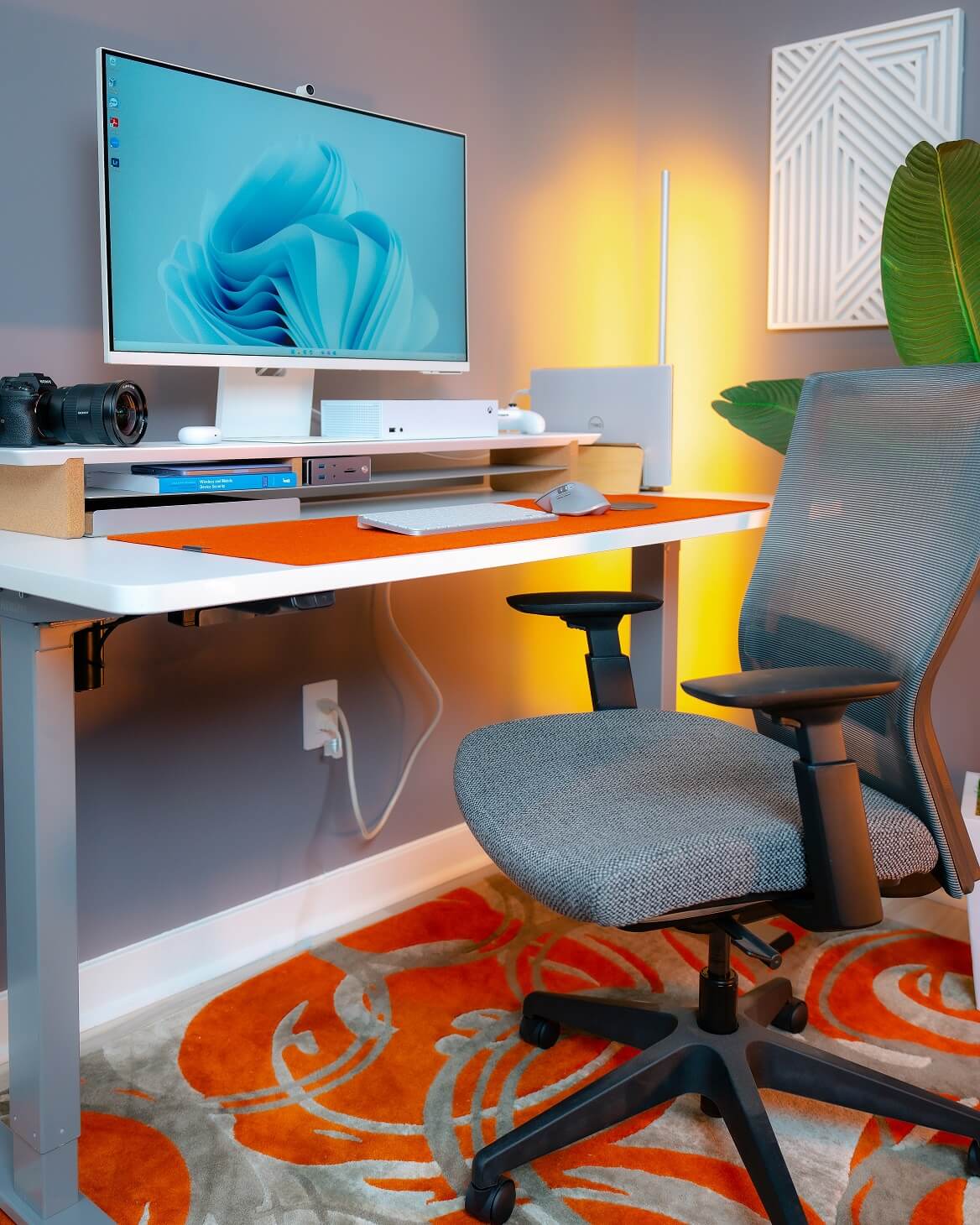Stand-up desks are becoming more popular, especially as people realize the health benefits of standing while working. But choosing the right one for your space and style can be a challenge. It’s important to find a desk that fits both your physical needs and the aesthetic of your office. This article will guide you through the essential considerations to help you make the right choice for your stand-up desk.
1. Evaluate Your Space: Dimensions Matter
The first step in choosing the right stand-up desk is to evaluate your workspace. You need to measure the space available for your desk. A stand-up desk generally requires more room than a standard desk, especially if you plan to adjust its height frequently. So, it’s essential to measure not just the desk, but also the space needed for easy movement.
If you’re working with limited space, consider compact options like corner desks or smaller models. If your office is larger, you have more flexibility to choose a bigger desk with extra features. Just make sure the desk won’t overcrowd the room or limit your mobility.

2. Match the Desk Style with Your Office Aesthetic
Your office style should influence your choice of desk. Whether you prefer a modern look or a more classic design, it’s important that your desk complements the overall aesthetic of your workspace.
-
Modern/Minimalist: If your office has a contemporary design, a sleek, metal frame with a simple wood or glass top will suit it well. These desks blend well with clean, uncluttered spaces.
-
Traditional/Classic: For a more traditional look, a wooden desk with a warm, classic finish will create a cozy, professional atmosphere. These desks tend to be sturdy and timeless, fitting well with vintage or conventional office furniture.
-
Versatile/Adjustable: Many standing desks come with adjustable frames or modular parts. These options allow you to customize the desk for your space, while still keeping the look simple and unified.
Choosing a desk that fits your office style will not only improve your workspace’s look but will also create a more pleasant environment for your daily tasks.
3. Ergonomics Are Key: Comfort and Health
A stand-up desk should not just look good—it needs to support your health and comfort. To avoid strain and discomfort, here are a few ergonomic features to consider:
-
Height Adjustability: The ability to change the desk’s height is a must. You want to be able to easily adjust between sitting and standing. Some desks use electric motors to move up and down, while others use manual cranks. Both have their advantages, but the key is smooth, easy adjustment.
-
Desk Depth: The desk should be deep enough for your computer and office essentials, allowing you to work without feeling cramped. Ideally, your screen should be about 20 inches from your eyes, and the top of the screen should be slightly below eye level.
-
Keyboard and Mouse Position: Ensure your keyboard and mouse can be positioned so that your arms remain at a 90-degree angle when typing. Some standing desks come with adjustable keyboard trays to make this easier.
-
Support for Multiple Monitors: If you use two or more screens, ensure the desk has enough space to accommodate them. You may need a larger desk or a model with built-in monitor arms to keep things organized.
By considering these ergonomic features, you can make sure your standing desk will support you for long hours of work without causing strain.
4. Storage Options: Keep Your Workspace Organized
A clutter-free workspace is essential for productivity. Many standing desks come with storage options, such as drawers or shelves, to keep your workspace organized. Look for a desk that offers enough storage for your office supplies, documents, and tech gadgets.
For smaller spaces, choose a stand-up desk with hidden compartments or modular storage solutions. This will help you keep everything organized without taking up too much room. If you don’t need much storage, go for a simpler design that focuses more on functionality and ease of use.

5. Tech-Friendly Features: Accommodate Your Devices
Today’s offices rely heavily on technology, so make sure your standing desk can accommodate all your devices. Look for desks that offer cable management options to keep wires out of sight. This will help reduce clutter and prevent the risk of tripping over cables.
Some desks also come with built-in charging ports, power strips, or USB ports. If you often charge multiple devices, look for a desk with these features to make your workspace more efficient.
Also, if you use multiple monitors or heavy equipment, ensure the desk is sturdy enough to support them. You want a desk that provides stability while accommodating your tech needs.
6. Material and Durability: Choose What Works for You
The material of your stand-up desk impacts its durability and look. Here are some options to consider:
-
Wood: Wooden desks offer a classic and natural look. They are sturdy and timeless, but they might require more maintenance than other materials.
-
Metal: Metal desks tend to have a modern, sleek look. They are durable, easy to clean, and often lightweight. These desks are great for a more industrial office style.
-
Glass: Glass-top desks offer a high-end, contemporary feel. They can make a small office feel more open and airy but may require more cleaning.
-
Laminate: Laminate desks are budget-friendly and come in a variety of finishes. While they may not have the same premium look as wood or metal, they are durable and easy to maintain.
Consider how the material will fit into your office style, as well as its long-term durability. A high-quality material will not only enhance the look of your office but will also last for years.
7. Cost and Investment: Prioritize Quality
While standing desks come in a range of prices, remember that this is an investment in your health and productivity. Higher-end desks may cost more, but they typically offer better durability, smooth adjustments, and added features like built-in cable management and programmable height settings.
Don’t be swayed by the cheapest option. Think long-term about comfort and ergonomics, as these will impact your workday. A good standing desk should last for years, so it’s worth spending a little more for something that’s well-made.
Conclusion
Choosing the right stand-up desk for your office isn’t just about function—it’s about creating a comfortable, efficient, and stylish workspace. By considering your space, style, ergonomic needs, and tech requirements, you can ensure that your stand-up desk will fit both your body and your environment.
Whether you work from home or in a traditional office, investing in a standing desk can transform your workday. With the right choice, you’ll enjoy improved health, comfort, and productivity for years to come.
